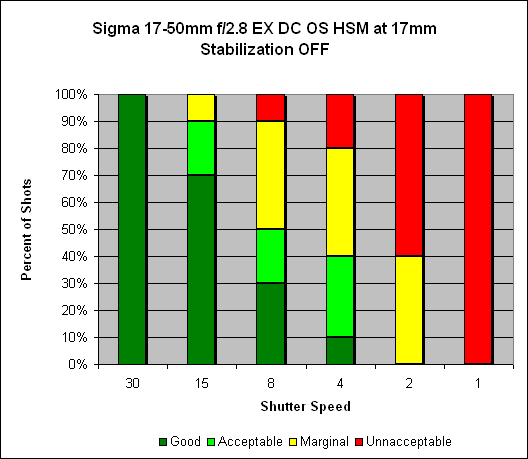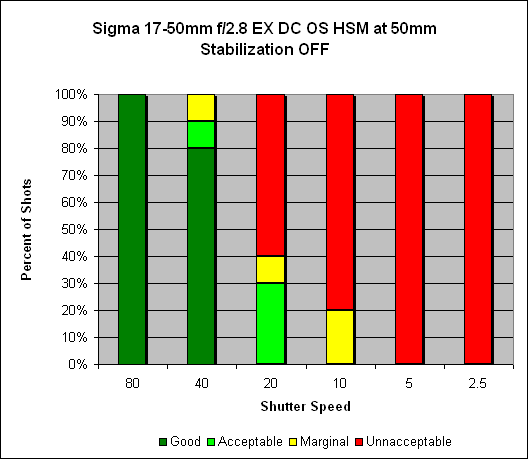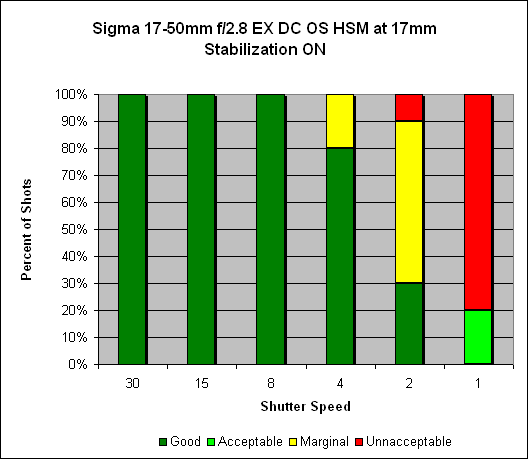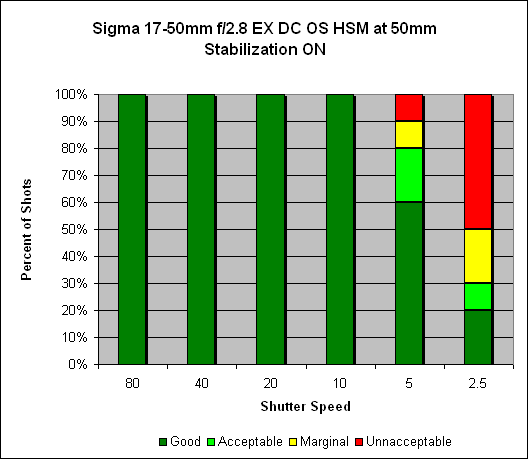Most people tend to think of image stabilization as being mainly for telephoto lenses. While it's true that their longer focal lengths tend to magnify the effects of camera shake, image stabilization can provde a very useful assist at wider angle focal lengths as well; anyone who's ever tried to blur the image of a waterfall, while keeping the surrounding landsape tack-sharp knows exactly what I'm talking about.
At the wide end (17mm), we see at least two, if not two and a half stops of hand-holding stability. With OS turned off, we would expect the lens to be consistently sharp at around 1/15s, and this is more or less the case: 70% of the shots are excellent. With OS turned on, we get 100% sharp images at 1/15s and 1/8s, and 70% of our shots at 1/4s are excellent.
 |
| Mouse over this chart to show results with IS activated. |
At 50mm, we see at least two and a half stops of hand-holding stability, with excellent shots being obtained at shutter speeds as slow as 1/10s. Even at 1/5s, we get excellent shots 50% of the time.
 |
| Mouse over this chart to show results with IS activated. |
IS systems tend to provide more benefit to less-stable shooters than very steady ones, so most users will see the same or greater amounts of shake reduction as we measured here. You can read more about our IS test methodology here: SLRgear IS Test Methodology, v2.

